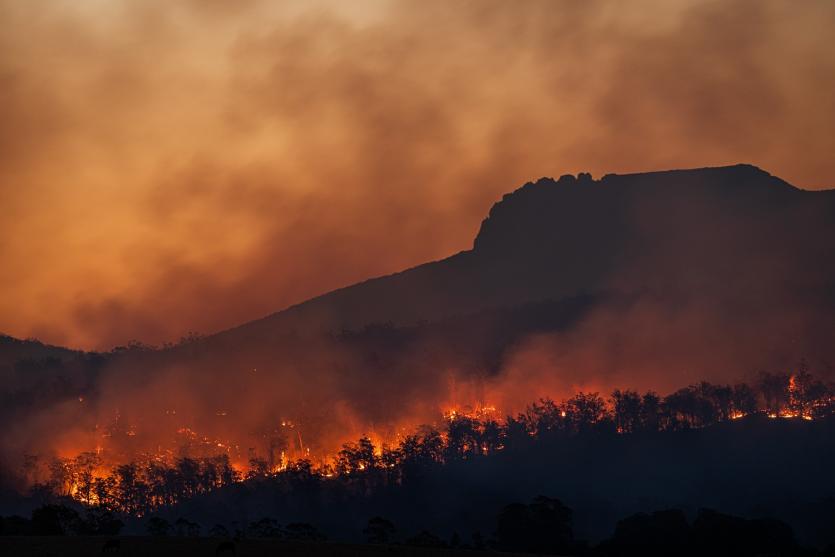Bushfires below Stacks Bluff, Tasmania, Australia. Photo by Matt Palmer on Unsplash
By Patryk Krych | The World Daily | NOVEMBER 29th 2021
A new study from the Commonwealth Scientific and Industrial Research Organisation (CSIRO) found that over the course of the last 30 years, bush fires in Australia had been increasingly driven by climate change, becoming longer and deadlier overtime.
Though the correlation between forest fires and climate change has been known for a while now, this is among the first studies of its kind to confirm it, using data gathered from previous forest fire incidents and elements driving fire activity, and was published in the Nature Communications journal.
“While all eight drivers of fire-activity played varying roles in influencing forest fires, climate was the overwhelming factor driving fire-activity,” said CSIRO scientist, Pep Canadell. Some of the most popular fire activity drivers include ignition, fuel accumulation and climate among them.
“There is a lot of things we can do, and we are working on a lot of new warning systems, increase the prediction capabilities, so we can be better prepared before the fire comes,” Canadell added. “That is probably the single-most important thing we can do.”
32 years of satellite data and 90 years of ground-based research were analysed by the researchers for the study. They had warned that the likelihood of mega-fires, like those in Australia’s 2020 blaze, will become increasingly likely to occur again as time goes on and the conditions of the climate continue to worsen.
24 million hectares of land were burned in the Australian ‘Black Summer’ of bushfires, which lasted from July 2019 through to 2020. To this day it remains the country’s most intense bushfire season on record. Fears over history repeating itself have been common since, with authorities taking extra precautions during recent Summer months.






